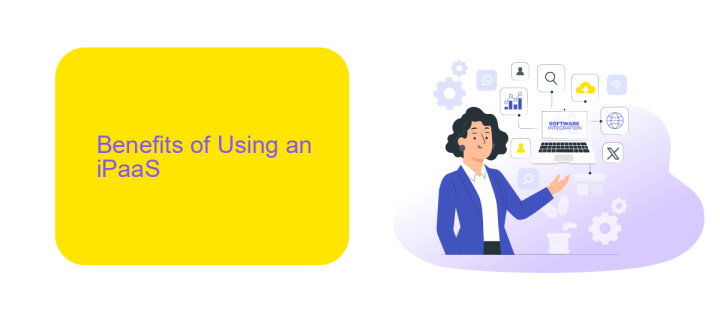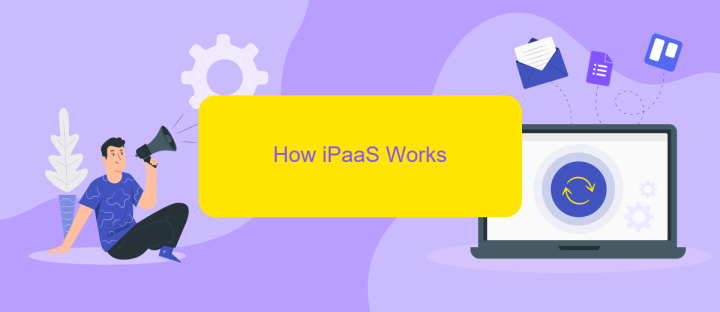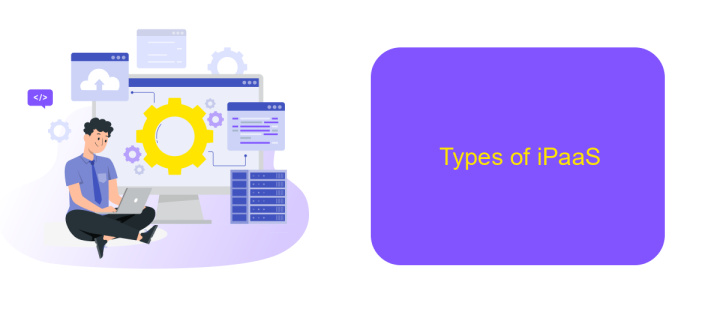What is iPaaS Software
Integration Platform as a Service (iPaaS) software is a cloud-based solution designed to streamline the integration of various applications and data sources within an organization. By providing a unified platform, iPaaS enables businesses to connect disparate systems, automate workflows, and enhance data sharing, ultimately improving operational efficiency and agility. This article explores the key features, benefits, and use cases of iPaaS software.
What is iPaaS?
Integration Platform as a Service (iPaaS) is a cloud-based solution that enables seamless integration of various applications, data, and processes. It simplifies the complex task of connecting disparate systems, allowing businesses to automate workflows and improve efficiency. iPaaS platforms provide a unified interface to manage and monitor integrations, reducing the need for extensive coding and manual intervention.
- Automated data synchronization between applications
- Real-time monitoring and error handling
- Scalability to handle increasing data volumes
- User-friendly interface for easy setup and management
- Pre-built connectors for popular applications and services
One such iPaaS solution is ApiX-Drive, which offers a range of features to streamline integration processes. With ApiX-Drive, users can quickly set up integrations without any coding knowledge, leveraging pre-built connectors for numerous applications. This makes it easier for businesses to maintain data consistency and enhance operational efficiency, ultimately driving better business outcomes.
Benefits of Using an iPaaS

Implementing an Integration Platform as a Service (iPaaS) offers numerous advantages for businesses seeking to streamline their operations and enhance connectivity. One of the primary benefits is the ability to seamlessly integrate various applications and data sources, eliminating the need for manual data entry and reducing the risk of errors. This leads to more efficient workflows and improved data accuracy, which are crucial for making informed business decisions. Additionally, iPaaS solutions are scalable, allowing businesses to easily expand their integration capabilities as they grow, without the need for significant additional investment.
Another significant benefit of using iPaaS is the reduction in IT complexity and costs. By centralizing integration efforts through a single platform, businesses can avoid the fragmented and often costly approach of managing multiple integration tools. For instance, services like ApiX-Drive provide user-friendly interfaces and pre-built connectors that simplify the process of linking various software applications. This not only speeds up the integration process but also empowers non-technical users to set up and manage integrations, freeing up IT resources for more strategic tasks. Overall, iPaaS enhances operational efficiency, reduces costs, and supports business agility.
How iPaaS Works

iPaaS (Integration Platform as a Service) simplifies the integration of various applications and services. It acts as a middleware, enabling seamless data flow between disparate systems without the need for extensive coding. This is particularly useful for businesses looking to streamline operations and enhance data accessibility.
- Connect: iPaaS platforms, like ApiX-Drive, allow users to connect multiple applications through a unified interface.
- Configure: Users can configure data mappings and workflows to ensure accurate data transfer and synchronization between systems.
- Automate: Once configured, the platform automates data integration processes, reducing the need for manual intervention.
- Monitor: iPaaS provides monitoring tools to track data flows and integration performance, ensuring everything runs smoothly.
By leveraging iPaaS solutions such as ApiX-Drive, businesses can quickly set up and manage integrations, improving efficiency and reducing the risk of data silos. The platform's user-friendly interface and robust automation capabilities make it an invaluable tool for modern enterprises.
Types of iPaaS

iPaaS (Integration Platform as a Service) solutions come in various types, each catering to different integration needs and complexities. These platforms are designed to streamline and simplify the integration of disparate applications and data sources, making it easier for businesses to manage their workflows and processes.
One common type of iPaaS is the cloud-based iPaaS, which offers seamless integration capabilities entirely through the cloud. This type is particularly useful for businesses looking to minimize their on-premise infrastructure and leverage the scalability and flexibility of cloud services. Another type is the hybrid iPaaS, which combines both cloud and on-premise integration, offering a balanced approach for businesses that need to integrate legacy systems with modern cloud applications.
- Cloud-based iPaaS: Ideal for fully cloud-based environments.
- Hybrid iPaaS: Combines cloud and on-premise integration.
- Enterprise iPaaS: Designed for large-scale, complex integrations.
- Microservices iPaaS: Focuses on integrating microservices architectures.
- API management iPaaS: Specializes in API integrations and management.
For businesses looking for a user-friendly solution to manage their integrations, services like ApiX-Drive offer a straightforward interface to connect various applications and automate workflows without the need for extensive coding knowledge. By leveraging such platforms, companies can achieve efficient and scalable integration solutions tailored to their specific needs.
iPaaS Use Cases
iPaaS (Integration Platform as a Service) is a powerful tool for businesses looking to streamline their operations and enhance connectivity between disparate systems. One common use case is automating workflows between various applications, such as CRM, ERP, and marketing platforms. For example, ApiX-Drive enables seamless integration between these systems, allowing data to flow effortlessly and reducing the need for manual data entry. This not only saves time but also minimizes the risk of human error, ensuring more accurate and reliable data management.
Another significant use case for iPaaS is enhancing customer experiences by integrating customer support systems with communication platforms. Businesses can use iPaaS to connect their helpdesk software with email, social media, and chat applications, ensuring that customer queries are addressed promptly and efficiently. ApiX-Drive, for instance, provides robust integration capabilities that help businesses maintain a consistent and responsive customer service experience across all channels. By leveraging iPaaS solutions like ApiX-Drive, companies can achieve greater operational efficiency and deliver superior service to their customers.
FAQ
What is iPaaS Software?
How does iPaaS work?
What are the benefits of using iPaaS?
Can iPaaS be used for automating workflows?
What are some examples of tasks that can be automated using iPaaS?
Routine tasks take a lot of time from employees? Do they burn out, do not have enough working day for the main duties and important things? Do you understand that the only way out of this situation in modern realities is automation? Try Apix-Drive for free and make sure that the online connector in 5 minutes of setting up integration will remove a significant part of the routine from your life and free up time for you and your employees.

